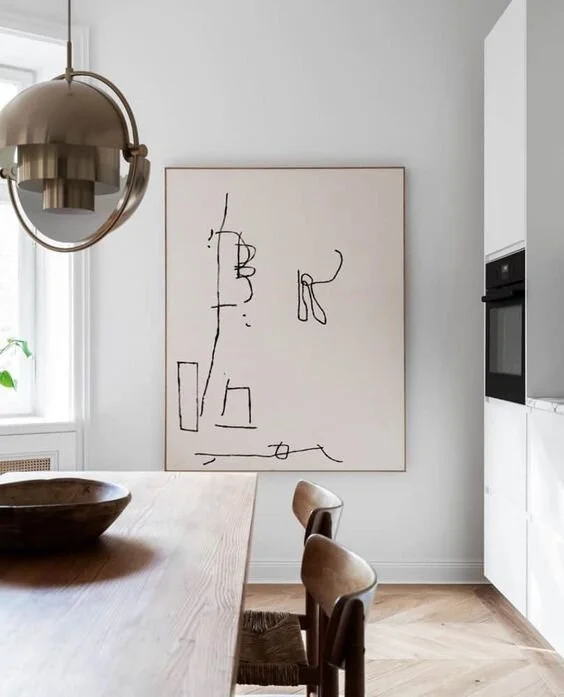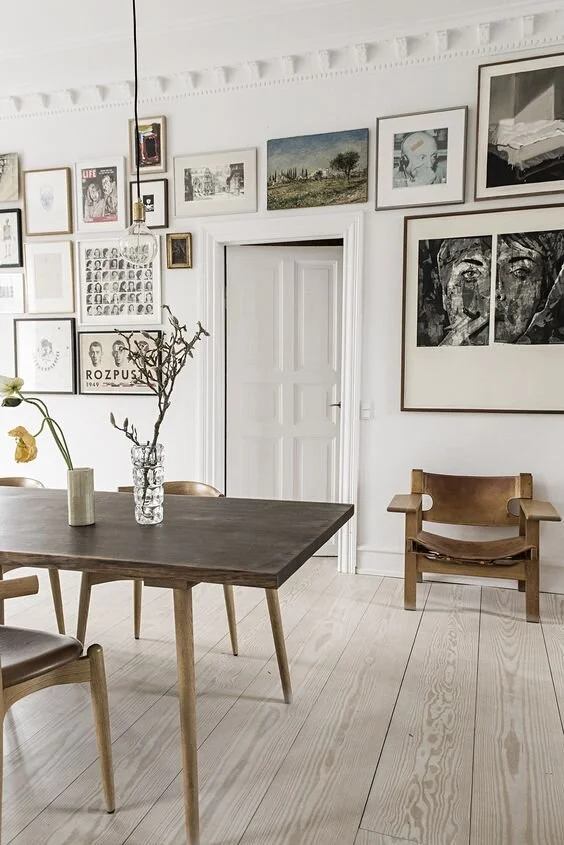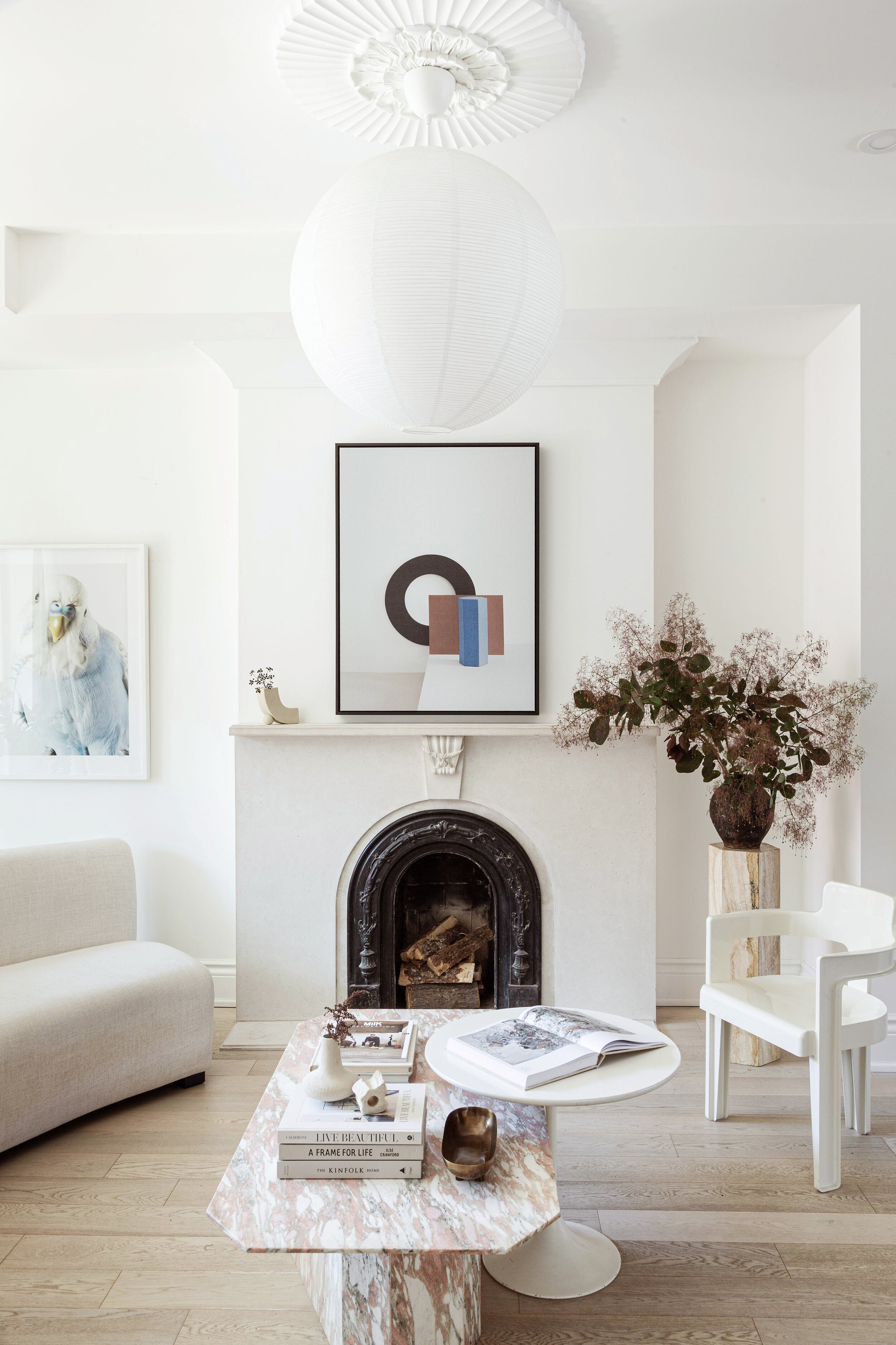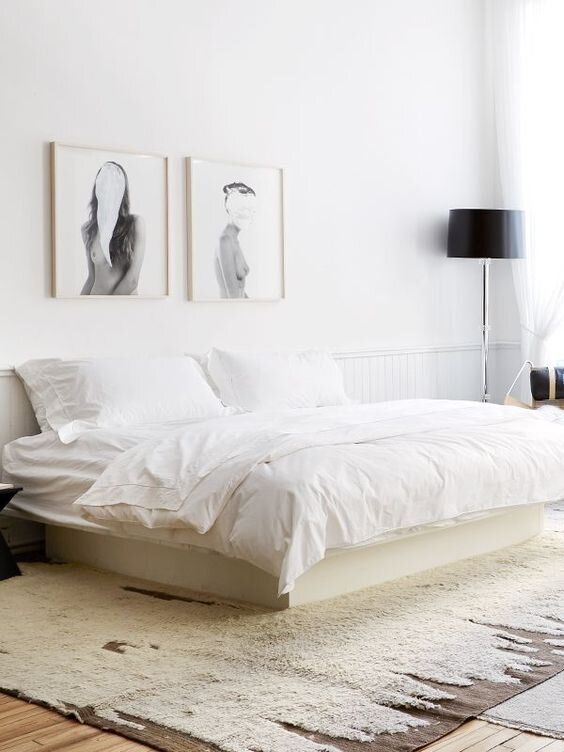
Have you ever entered a room and admired the frame on the wall?
Chances are, probably not. And that’s exactly how a frame should be_ mostly inconspicuous, except only to an observant few.While a frame’s design is most often, and rightly so, influenced by the art, location and other factors can also have a bearing on the framing style you choose.
Whether it’s framed fine art to be hung in a gallery or framed art for home and office decor, the right frame is vital to properly showcase your art. There are several schools of thought concerning frame selection but no rules that can’t be bent. This is where a professional framing service can be especially helpful.
Let’s have a look at some of the factors you should consider when framing limited edition prints, photographs, paintings and more.
Image source - cocolapinedesign.com
The story inside the frame
Whether you choose wood, metal or plastic, the frame will help your art tell its story. Does your frame give an air of timelessness or refinement? A classical subject matter is probably better married off to a handsome walnut, for example, than to a sleek and sexy silver frame. Not only will a unique custom frame subtly convey new details about the art, but also considerably increase its value.
The medium you’re framing
The materials and mediums used to create the art will have a fundamental influence on the frame. While a protective mount or glass is not crucial for robust oil and acrylic paints on canvas or boards, it is for framing a limited edition print. Similar to a framed fine art print, delicate watercolour or drawing papers should be protected behind a mat card and glass. For pastel or charcoal mediums, a mat is needed simply to keep these mediums from touching and smudging the glass.
Image source - Anna Church Art / Home Style Magazine (Cover Image)
There’s more to matting
In addition to protecting your art, matting can bring more focus to the artwork as well as increase the frame’s scale of your paintings, photographs or limited edition prints. Like frames, mat borders need to remain inconspicuous and are best matched to the white of the work on paper rather than pure white, which can be quite distracting. In some cases, you can choose a coloured mat to complement the art but, again, be careful not to deflect from the art itself.
Size and scale
Larger artwork is typically best paired with a wider and larger frame. If a big frame won’t work in your home or office space, consider a floater frame to display work on canvas or fabric (like Ebb & Flow on linen). A floater frame gives the artwork the illusion of floating inside the picture frame without touching it. If done correctly, this can create quite an impressive visual detail. Oil paint or works printed on materials like canvas, fabric or linen are generally hardier and more stable in the face of the elements. In most instances, no protective glass is required -- just a simple, elegant wood frame -- allowing you a better view of the texture of the fabric or the sweeps and buildups of the paint. You can hang them in indirect sunlight without any UV protection, and lightly dust them without causing damage.
Image via - sfgirlbybay.com
Image source - Via Anna Church Art
Image via sfgirlbybay.com
Image via - designlovefest.com
Image via - mydomaine.com
Image Via - Anna Church Art
Regular glass or museum
Most importantly, the glass protects artwork on paper. Beyond that, it serves other important functions, as well. Regular, scratch-resistant, glass is most commonly used for framing but depending on where you are hanging your art, you may want to look at other glass options. Non-glare glass works well with pieces situated directly across from a window while conservation glazing offers 97 per cent UV protection, almost as much as museum glass. Acrylic glazing, which is much lighter than glass, is another alternative, especially for large works of art.
Built to last
From acid-free mat board to special tape, archival framing prevents dust, air pollution, acid migration, and even insects from destroying your art over time. If you have important documents, beloved photographs, or valuable limited edition prints, you may want to consider archival framing to protect them for decades to come.
Image source - kristinalynne.ca
Whether you’re framing a limited edition print or your own latest watercolour on paper, a custom frame can capture intricacies in the art that the wrong frame just cannot. Frames change in style repeatedly throughout history. They accurately reflect a place and a time and that's exactly why they're so valuable today.
In addition to producing limited edition fine art prints in Toronto, I provide a professional custom framing service for my prints, no matter where you are in the world. Please don’t hesitate to contact me. I’m here to help and guide you through this final step.
For further Framing and hanging ideas and inspiration, visit my Pinterest board
Be safe + well
xo Anna












